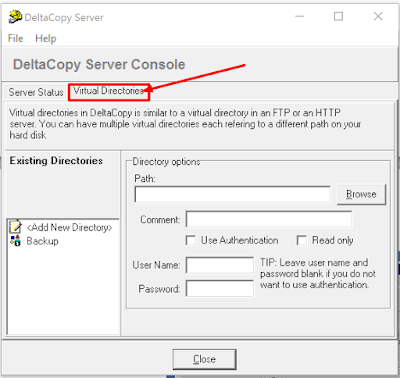Installing and Configure SVN Server on Centos 6.7 / Redhat 6.x
What is SVN (Subversion)?
Subversion is a free/open-source version control system. Subversion manages files and directories, and the changes made to them, over time. This allows you to recover older versions of your data, or examine the history of how your data changed.
1. Install the wandisco repo
# vi . repos . subsvn . repo
[WandiscoSVN
2. Install needed packages (mod_dav_svn and subversion)
# yum install
subversion mod_dav_svn
3. Modify / Create Subversion
config file /etc/httpd/conf. . conf
3. Modify / Create Subversion config file /etc/httpd/conf
Add following
config to /etc/httpd/conf. . conf
# vi . . conf
<Location /svn svn SVNParentPath svn SVNListParentPath auth
4. Add SVN (Subversion) users
Add 2 test users so that we can see the different type
of permissions
# htpasswd -cm
/etc/svn-auth testuser testuser
# htpasswd -m
/etc/svn-auth
5. Create and configure SVN repository
# mkdir /var/www/svn cd svn testrepo
# chown -R apache. testrepo
## If you have
SELinux enabled (you can check it with "sestatus SELinux
security context chcon
#
chcon -R -t httpd_sys_content_t /var/www/svn testrepo
## Following
enables commits over http ##var svn testrepo
6. Restart the apache to test
the configuration
# chown -R apache
# service httpd
restart
Goto
# service httpd
restart
7. Configure repository
To disable anonymous access and enable access control add
following rows to testrepo conf svnserve . conf
## Edit the testrepo conf svnserve . conf vi testrepo conf svnserve . conf
## Disable
anonymous access ##anon
##
E nable access control ##authz db authz
8. Create trunk, branches and tags testrepo
# mkdir -p /tmp/svn , ,
Then import template to project repository using “svn import”
command:
# svn import
-m 'Initial import' /tmp/svn
Setup SVN (Subversion) Access Control with Apache and mod_authz_svn
9. Add SVN (Subversion) users
## Create testuser testuser auth
10. Create SVN Access Control file
# touch /etc/svn
# vi svn
add
[groups testreadgroup testuser
testrwgroup
[testrepo : are
testrwgroup rw
[testrepo1: /]te streadgroup
= r rw
11. Add AuthzSVNAccessFile to subversion server
config
Add AuthzSVNAccessFile row to config:
# vi . . conf AuthzSVNAccessFilesvn /etc
Finally /etc/httpd/conf. . conf
<Location
/svn
DAV svn SVNParentPath /var svn
AuthType Basic
AuthName "Subversion repositories"
AuthUserFile /etc/svn-auth AuthzSVNAccessFile /etc svn Require valid </Location>
Finally /etc/httpd/conf. . conf
<Location
/svn
12.
Restart Apache Web Server
# service
httpd restart
# service
httpd restart
Keywords: Subversion, SVN, SVN Server, Adding Users on SVN Server, Backup SVN, Restore SVN.


Comments
Post a Comment